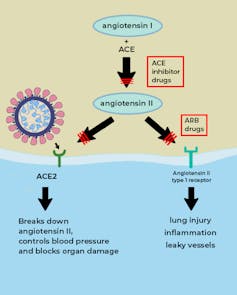The educated and college trained individual usually focuses on his field of specialty. Crossing disciplines is now much more common than in the past but it is still difficult for many to enter into the field of Microbiology. People in business generally have no time for deep study except on matters directly relating to their business operations.
However, the good functioning of government is properly the domain for all of us. This was the original mandate for writing the American Constitution. This history of government agencies set up over the years to become specialist watchdogs over various sectors of American Industry has been plagued by a reversal of roles, where the watchdog is “captured” and controlled by the corporations and industry for which it was to oversee.
This is the situation today for the CDC, FDA, and NIH. These agencies are no longer independent in their judgments. Their guidance for what substances in food are safe and for what medical procedures should be allowed are not reliable. They cannot be relied upon to tell us the truth but rather they tell us what is good for private corporations.
Ignorance of what an ACE-2 Receptor is and how it plays its role in the functioning of a cell in the human body is the reason why the FDA has been able to nix the use of Hydroxychloroquine in the protocol for early treatment of the Corona Virus. Here is an excellent description of The ACE-2 Receptor:
What is the ACE2 receptor?

ACE2 is a protein on the surface of many cell types. It is an enzyme that generates small proteins – by cutting up the larger protein angiotensinogen – that then go on to regulate functions in the cell.
Using the spike-like protein on its surface, the SARS-CoV-2 virus binds to ACE2 – like a key being inserted into a lock – prior to entry and infection of cells. Hence, ACE2 acts as a cellular doorway – a receptor – for the virus that causes COVID-19.
Where in the body is it found?
ACE2 is present in many cell types and tissues including the lungs, heart, blood vessels, kidneys, liver and gastrointestinal tract. It is present in epithelial cells, which line certain tissues and create protective barriers.
The exchange of oxygen and carbon dioxide between the lungs and blood vessels occurs across this epithelial lining in the lung. ACE2 is present in epithelium in the nose, mouth and lungs. In the lungs, ACE2 is highly abundant on type 2 pneumocytes, an important cell type present in chambers within the lung called alveoli, where oxygen is absorbed and waste carbon dioxide is released.
What is the normal role ACE2 plays in the body?

ACE2 is a vital element in a biochemical pathway that is critical to regulating processes such as blood pressure, wound healing and inflammation, called the renin-angiotensin-aldosterone system (RAAS) pathway.
ACE2 helps modulate the many activities of a protein called angiotensin II (ANG II) that increases blood pressure and inflammation, increasing damage to blood vessel linings and various types of tissue injury. ACE2 converts ANG II to other molecules that counteract the effects of ANG II.
Of greatest relevance to COVID-19, ANG II can increase inflammation and the death of cells in the alveoli which are critical for bringing oxygen into the body; these harmful effects of ANG II are reduced by ACE2.
When the SARS-CoV-2 virus binds to ACE2, it prevents ACE2 from performing its normal function to regulate ANG II signaling. Thus, ACE2 action is “inhibited,” removing the brakes from ANG II signaling and making more ANG II available to injure tissues. This “decreased braking” likely contributes to injury, especially to the lungs and heart, in COVID-19 patients.
Dr. Mobeen Sayed:
Hydroxychloroquine can prevent lethal action of the Corona Virus in four different ways:
- By raising the PH and reducing the acidity of the cell, it prevents the virus from fusing with the cell membrane.
- By lowering acidity of the cell, the replicating function of the endoplasmic reticulum is reduced again preventing the Viral RNA to replicate when it tries to hijack the endoplasmic reticulum. .The organelle function is stalled, reduced, slowed down.
- The corona virus uses RNA-dependent RNA polymerase (RdRP, RDR) for replication. Hydroxychloroquine acts as an Ionophore for Zinc, allowing Zinc to enter the cell. The Zinc binds with the RdRP enzyme and disables its function.
- Blocks the last step in amino acid glycation in a cell creating a low affinity for the ACE receptor to combine with the virus.


